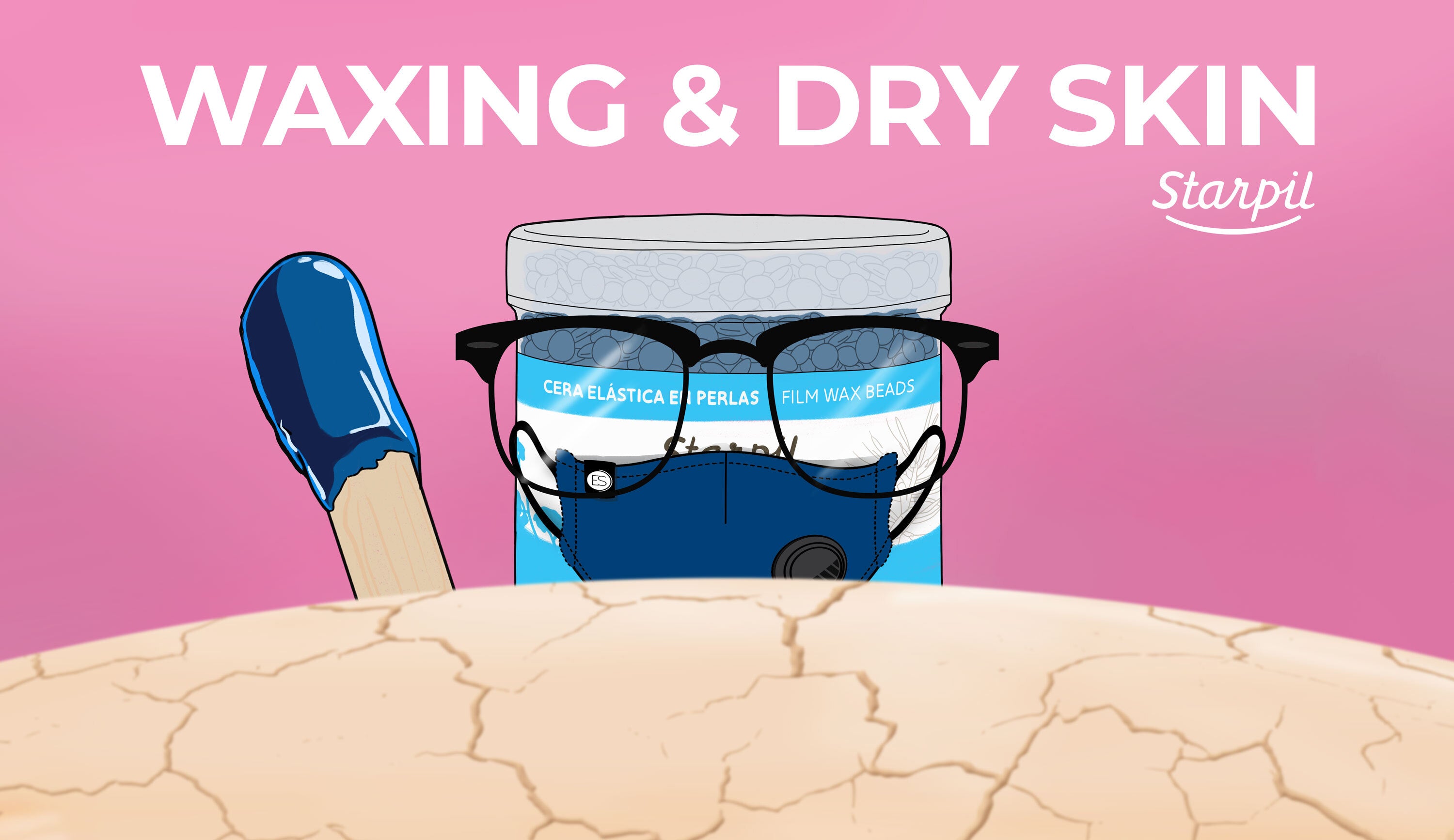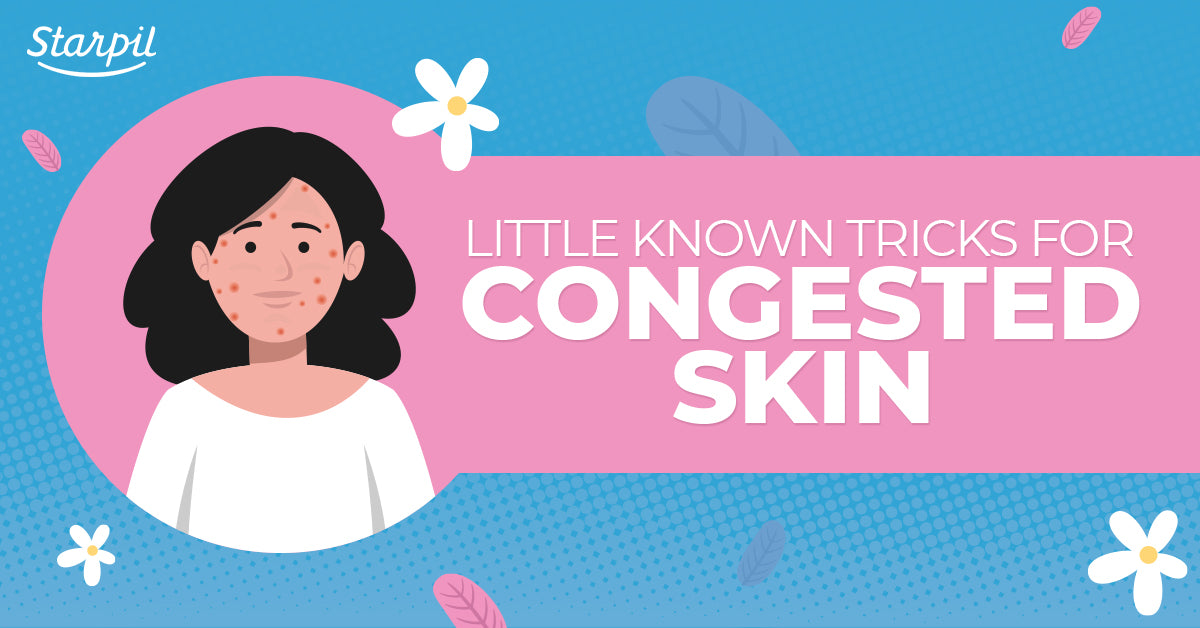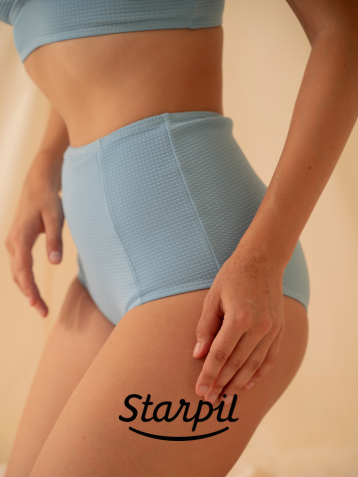Waxing and Dry Skin


If you work with clients that frequently experience dry skin, they might not realize that their skin can conflict with their waxing service if they don’t practice the right post-wax care routine.
Dry skin can be linked to acne after waxing, and can even cause issues for healthy skin and waxing. To keep clients educated and safe (and to give them the best results!), make sure you know everything there is to know about caring for dry skin so your clients look and feel their best.
Table of Contents
In this article, we’ll provide you with the best tools and tricks to deal with ingrowns, hair breakage, and acne after waxing, which are all issues that routinely stem from having dry skin.
Keep in mind, the key to improving your clients’ skincare is mostly up to them, and their care outside of the salon. However, with a mix of lifestyle tips, and the right waxing products, you’ll not only find the best wax for dry skin but will let them keep skin nourished in between appointments.
READ: How to Get Smooth Skin: Top Dermatologist Recommendations
What is Dry Skin?
Before you look into the best ways to get rid of dry skin, you’ll need to know what dry skin is and the characteristics of the skin type so you know just how to treat and care for it.
Dry skin is a condition that occurs when the skin is lacking in moisture and cannot produce sebum to protect its outer layer. It’s characterized by scaling, itching, and cracking on the skin’s surface. Though most commonly found on the face, arms, and legs, you can experience dry skin on any part of the body.
This skin type is mostly caused by genetics, but can also be influenced by environmental conditions. Even if you have oily skin, you can also experience dryness now and then due to things like frequent hand washing or experiencing particularly dry or cold weather.
Beyond generally dry skin, this skin type can also be a part of more serious dry skin conditions like eczema or dermatitis. These conditions usually need a bit more attention than just staying moisturized, so always consult a dermatologist or doctor when looking for treatment options for these conditions.
READ: Working with Different Skin Types
What’s the Difference Between Dry and Dehydrated Skin?

Let’s get straight to the point: the difference between dry and dehydrated skin is that dry skin is usually hereditary or genetic, and dehydrated skin is more circumstantial and occurs because of a lack of hydration of environmental circumstances.
Dehydrated skin can also occur in anyone, regardless of skin type. When the skin gets dehydrated, it tends to produce excess oil as a last-ditch effort to create some type of lubrication for it to function properly.
With dehydrated skin’s production of excess oil, it doesn't only increase your chances for acne but also makes it even more difficult for water moisture to get in.
What makes things even worse is that people might cease using hydrating products, thinking that they make what appears to be oily skin worse. However, for many, what seems to be oily skin could just be a signal from dehydrated skin to give it some extra care.
READ: Working with Dry vs. Dehydrated Skin: A Guide for Professionals
What are the Effects of Dry Skin on Waxing?
When working with dry skin as a professional waxer, you’ll need to take some precautions to keep skin healthy and safe, while still keeping it smooth and providing great results.
If your client has dry skin that’s depleted of water moisture, their hair can easily become dry and brittle. This makes hairs more prone to breakage and consequently increase the risk of ingrown hairs and acne after waxing.
Dry or dehydrated skin can limit wax’s access to hair and the effectiveness of removal. Dry skin cells mix with airborne debris and oils clogging the pores, which adds another barrier to a successful waxing appointment.
Dry skin can also be a factor in having sensitive skin. When skin has adequate moisture, the microbiome (aka all of the good bacteria, antibodies and antioxidants) makes skin robust and healthy enough for flawless hair removal. When skin is depleted, the microbiome isn’t as strong, which leaves the skin prone to irritation and damage.
In addition to this, dry skin increases skin redness and irritation, the possibility for skin lifting, acne after waxing, and depletes skin further.
READ: Little Known Tricks for Congested Skin
How to Protect Dry Skin When Waxing
Taking care of dry skin in between clients’ visits to the wax salon is vital to keep skin healthy. If clients have the tools to properly care for and hydrate their microbiomes and skin, they’ll be set up for success and health.
Remember, it's all about water intake and protection from water loss.
Remind them to stay mindful of how their lifestyles add or take water from them, and to stay hydrated to keep skin wax-ready. Remind them that when you consume water-depleting foods, drink, or drugs, or have a routine that exposes you to too much extreme weather, drying skincare, wax products, or makeup, that you’ll need to counter it by balancing the body with their opposites.
Eat water-rich foods, probiotics, drink more water, and make sure to only use skincare products with nourishing ingredients hospitable to your skin type.
READ: How to Get Rid of Oily Skin
Balancing Dry Skin Through At-Home Care
Looking for tips to keep dry skin balanced and nourished? Here are some go-to strategies to keep skin in its best condition:
- Before showering, give the body a light dry brushing. Using circular motions, move from the outside of the body toward the heart to get the blood flowing in a non-abrasive way.
- Massage the body with sesame oil (even if you have oily skin!). Some oils, like sesame oil, can help oily skin and skin with acne by drawing out impurities while being anti-bacterial and filled with calming anti-inflammatories. This is also another way to help with circulation, a problem that occurs with dry skin. (Don't worry, you'll be washing it off right after.)
- Shower with natural body washes and cleansers without sulfates.
- Try spritzing on some natural rose water, a hydrosol, or cooled tea like chamomile all over the body.
- Apply a lotion or body butter depending on how dry you are to the skin while it is still damp after showering to lock in the water moisture.
- Don't vigorously dry the skin. Sometimes gentle daily exfoliation can do more than one intense scrub.
READ: PCOS Hair Removal & Waxing Guide
The Best Pre & Post-Wax Care for Dry Skin
The best pre and post-wax care for dry skin depends on skin’s sensitivity and your client’s personal preference. However, the best routine for caring for dry skin before and after a waxing appointment is as follows:
- Starpil Wax Pre Wax Care Gel is designed to cleanse away excess skin oils while conditioning and preparing the skin before waxing with chamomile, hamamelis water, rosemary, and lavender.
- Post Wax Care Oil is applied immediately after waxing to flush the skin and advance healing in the skin as it removes any wax residue.
- The best after wax care for dry skin is Post Wax Intensive Care Lotion. It's made with oat extract to speed up skin pH level recovery, instantly restore skin moisture levels, help relieve potential irritation, and provide the utmost comfort for your clients.
- For the complete package on working with dry skin, the Starsoft Pre & Post Wax Care Bundle is hypoallergenic and gentle on dry and sensitive skin. It's made with neurosensory actives to calm the skin after waxing, tamanu oil, and barley extracts that protect, cleanse, and deeply hydrate the skin. This pre and post-wax collection can help to restructure freshly-waxed skin and dramatically reduce itching, redness, and discomfort after waxing.
The Best Wax for Dry Skin
The difference between hard wax and soft wax for waxing dry skin is that hard wax has higher plasticity and doesn't adhere to the skin as much as soft wax does.
Additionally, Starpil’s stripless hard wax collections are specially formulated to provide the most nourishing and gentle experience while removing hair with ease.
Starsoft Clear Hard Wax
If you use Starsoft Hard Wax in your professional wax warmer, you have everything you need for waxing clients with dry and hypersensitive skin. It's free from pine rosin, perfumes, coloring agents, or preservatives and is hypoallergenic.
Just like the Starsoft pre and post wax care, it includes neurosensory properties like Tamanu oil to reduce discomfort while nurturing the skin back to balance.
Pink Film Hard Wax
This creamy wax formula is designed to combine a gentle application with excellent flexibility to envelop even the tiniest hairs on dry and sensitive skin types - all without damaging the top layer of the skin.
It's gentle enough for the most intimate areas on the body such as the bikini area and works well on delicate areas like the face and underarms.
Coral Hard Wax
This wax formula blends the effects of sugaring and hard wax. This fast-drying formula is made with Mediterranean coral calcium powder to provide a gentle waxing experience that simultaneously balances the skin’s tone and helps the dermal layer recover post-wax.
This wax boosts skin luminosity for a genuinely smooth post-wax glow.
READ: Best Hard Wax for Easy Hair Removal
Final Thoughts
As with any skin type or concern, dry skin needs to be balanced and properly cared for to make it the perfect candidate for waxing services.
Using the best waxing products and the best wax for dry skin is going to do more than just remove hair: it’s crucial for dry and dehydrated skin so that clients can enjoy great hair removal while knowing their skin will be nurtured in the process.











